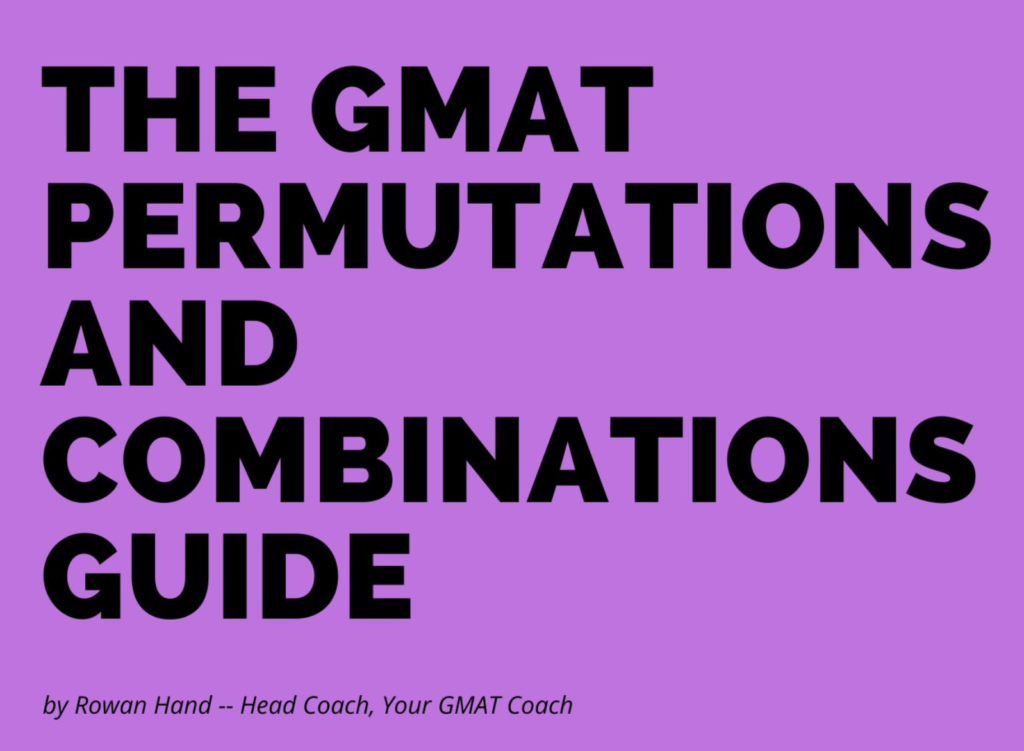GMAT Critical Reasoning Strategy Part II: Biases and Fallacies (or Yes, You Are Wrong About That)
What we have previously considered is what might be called the “models” that we can use to think properly, but just as important is to realize that we are hopelessly irrational creatures with a lot of bullshit programmed into us by society if not nature.
A good chunk of the time, we’re not using a guidepost such as a Mental Model to think more effectively and stuff; we’re actually using the model not to fuck up.
That said, “biases” isn’t necessarily a good word because there are certainly as many biases as there are people in the world. However, “fallacy” covers a nice bit of ground. They’re not exactly the same: a bias is of course a leaning or tendency in a certain direction, while a fallacy is a nice compact reasoning error.
However, they’re all sort of grouped together because when you commit a fallacy repeatedly you get a bias, or something like that.
Bearing this in mind, we can start with a list of common biases that you’ll see on a GMAT, and for each one we can look at arguments that present said fallacy.
We’ll start with the obvious ones that all the other books have covered, then get into the ones that are a bit more subtle but worth your time. As a warning, this is going to make watching the news a lot less fun.

1) Sunk Cost on the GMAT
The concept of sunk cost doesn’t necessarily come up directly in GMAT Critical Reasoning, but I’m including it here for a very specific reason. This is a fallacy that will help you think better for the GMAT, no doubt: sunk cost describes that peculiar type of reasoning that insists that because you’ve spent so much time thinking about this particular question that you’re really just right around the corner from an answer.
It’s the same fallacy that keeps people in shitty jobs or terrible relationships for far too long: the old “I have too much invested here to let this go” problem, even when letting go is precisely the right thing to do.
On the GMAT, the key is to take a cold, hard look at the question if you’re still really struggling after somewhere between 90 seconds and two minutes: if you legitimately think it’ll be more than about 30 seconds to get the answer, it’s time to cut losses and move on.
Don’t worry about the sunk cost; that’s paid for a learning experience. You’re better off to discontinue the struggle, I promise.
2) Gambler’s Fallacy (Past Does Not Predict the Future) on the GMAT in General
If the gambler’s fallacy didn’t exist, then the whole concept of Probability wouldn’t exist. How’s that for a great idea–creating a whole branch of math to deal with some shit that doesn’t work consistently because on a deep level it simply doesn’t work? More in the Probability Guide.
Anyway, the idea here is the same old idea: the mere fact that we have empirical evidence of something happening in a particular way that does not imply that this thing will continue to happen in the same way ad infinitum, yadda yadda yadda.
Just because the Sun has risen every day for the past six billion years or whatever does not guarantee that the Sun will rise tomorrow. There are too many nutty people out there with their hands on Big Red Buttons to guarantee that.
Just the same, the fact that I have thrown nine Heads in a row in no way implies that my next throw will be Heads.
Now, I’d be the first person to agree that a confident basketball player might find herself “in the zone” so much during one game that she’s totally on fire and sinks as many shots as she takes. There are any number of fat-tailed reasons for this, but let’s get one thing straight: mathematically, there is no such thing as a “streak.”
The chances of flipping a Head the tenth time are 50/50, just like every fucking throw before. Remember, the GMAT plays math, not basketball.
3) Correlation versus Causation in GMAT Critical Reasoning
It’s probably fairly obvious by this point that just because two things happen at the same time (Correlation) does not mean that one thing causes another (er… Causation). It does not mean that the other thing causes the one. It doesn’t even mean that they are actually related!
Remember my Aunt Gladys: just because we don’t know where she was doesn’t mean that she was robbing the liquor store. Knowing Gladys, she was probably scoring Oxys from her Chiropractor or distributing mildly-racist pamphlets from her Non-Denominational church.
It is of course possible that the two things are related, but it’s important to stress that the logic does not tell us this. Look at it this way: because we never see Clark Kent and Superman in the same room at the same time does not imply that Clark Kent is Superman, regardless of whether you know this by other means.
Likewise, Correlation versus Causation can get us into all kinds of awkward situations, the most standard of which basically deserves its own fallacy: the Arrow of Causation. Let’s check it out…
4) The Arrow of Causation in GMAT Critical Reasoning
Even when we’re pretty convinced that we’re working with Causation rather than Correlation, we can still run into problems.
Let’s look at a hypothetical situation where we take a load of Vegans and notice that they live longer than the general population. Unless self-righteousness extends life, it would seem that this has something to do with the diet. Right?
Right?
Well, maybe. I mean, look: there’s a fair chance these people are correct about a lot of things, but I’d rather not give them the satisfaction. However, just maybe, there are a few other things about Vegans aside from the fact that they are, you know, Vegans.
For example, the fact that Vegans subscribe to a fairly restrictive diet indicates that they put more thought into their eating than many people, which likely means that they put more thought into their health. It is possible that these same people are more likely to exercise and less likely to indulge in harmful habits such as drinking to excess or eating Cheetos dipped in lard.
This begs the question, of course, as to whether it’s actually the diet doing all the good or whether it’s just generally not being a moron about health; that alone would put one ahead of a vast swathe of the population.
What you’ll notice here is that CvC doesn’t mean we’re negating the possibility that the story is as stated. Rather, we’re introducing doubt. This means that we’ve taken what is framed as necessity and effectively proven that it is only a possibility.
Another good way to think about it is to find a counterexample: another possibility does exist. Introducing doubt, of course, makes the argument significantly less forceful.
5) Chicken or Egg Confusion in GMAT Critical Reasoning
It seems like a bit of a dumb fallacy here, but it feeds in well with the Arrow of Causation discussion.
The Chicken or Egg fallacy pretty obviously refers to the classic question “Which came first? The chicken or the egg?” That seems sort of obvious in retrospect, because, you know, evolution. It’s pretty safe to say that eggs existed millions if not billions of years before chickens ever did. But, yeah, cutting too fine…
However, idiomatically, at least, we know what the point of the statement Chicken or Egg is: we don’t know whether thing X caused thing Y or whether thing Y caused thing X.
It’s going to be particularly ugly in situations where we have double- or triple-negatives, except questions, or both. You really need to keep your head screwed on straight to follow which direction the argument is pointing in any of these cases.
Take an argument from modern publishing: many publishers will refuse authors who don’t have a significant social media platform because, of course, the publishers don’t want to do any marketing and expect the author to have built her own platform. (Not as if that’s their actual job or anything.)
Take a random author: if the author’s book doesn’t sell well, she can blame the publisher for not putting sufficient marketing juice behind it; however, the publisher can easily counter-claim that the author had not built a sufficient audience platform prior to the marketing attempts.
For marketing to work, they insist, there must already be a platform of sufficient size to be catalyzed by their vague, feckless attempts at marketing.
Does your head hurt yet? Basically the only winner here is Twitter. That’s Chicken or Egg for you.
6) “Don’t Kill the Bird Until It Stops Laying Eggs”
On with the bird theme. This one is basically straightforward, I’d say.
Any farmer worth her salt would never eat a hen for dinner until that hen gets old enough to stop laying eggs. Why is this? If I really need to explain, dinner is a one-time bonanza while eggs provide solid dividends throughout the course of a hen’s laying career.
That’s something like winning the lottery, cashing out, and putting all the money on black at the roulette table as the grand plan to make it big. Except there’s no payout where black wins and you triple your number of hens.
OK, that’s a stupid analogy. Let’s look at something more relevant: people of a certain generation born after a certain war, both identifying factors remaining nameless, but for the sake of argument maybe I will call them Zoomers. Maybe Zoomers. (Yeah, that sounds good. No one will ever figure that out.)
So these Zoomers, as some twisted product of keeping Pablo Escobar in business throughout the 80s and letting Bill Clinton deregulate the entire world in the 90s, have basically worked on a policy of short-term gains and maximizing quarterly earnings for the past forty years.
In so doing, they have shunted all but a vanishingly small amount of the money in existence upward into their own bank accounts while flagrantly disregarding ethical, moral, scientific, and of course legal checks and balances on their behavior. At the same time, they have managed to keep the successive generations from getting any legitimate foothold in the world, except maybe a couple of spergy creeps who are “in tech.”
Now even though they’re all like 80 we still have them running for US President and they still think they run the world. Because they do. And they’re still in it for themselves only. This short-term gain is of course–if this isn’t clear–“eating the hen rather than her eggs.”
The short-sightedness is legendary but still shocking. Maybe they need to get a better idea of the bigger picture. Maybe they need to see a photo of the Whole Earth. Maybe dropping acid would give them perspective. (Because that definitely worked the first time around.)
Just imagine what would happen if these people thought not days, but generations, ahead. We’d get the eggs: sustainable dividends from their hard work that could be paid out for the indefinite future. Perhaps in that case, those of us who will be changing their diapers wouldn’t be so resentful.
7) Selectivity Bias in GMAT Critical Reasoning
In other words, are we comparing like for like? This shows up in several different ways and is a root problem of fallacies such as survivorship bias or number vs. percentage.
The main thing to note here is that what we’re comparing on one side must specifically relate to what we’re comparing on the other side.
For example, it’s probably correct in the grand sphere of life, yet logically faulty, to suggest that “music was better in the 60s.” After all, we’re only looking at the reasonably available music from the 60s, which has by definition survived for more than 50 years at this point.
There’s a real chance that the fact that it survived has much to do with it being of higher quality than the crap music from the 60s. Without knowing what the full spectrum of available music at the time was then, we can’t necessarily say that the Velvet Underground or the Rolling Stones constitute an “average quality of music” during that era.
The selectivity bias in this case is of course comparing the sufficiently sifted-out survivors of the previous era to the torrent of dogshit that is available on the radio today. We could make guesses about what will last 50 years (and let’s be honest, a lot of what sticks around will probably be dogshit because there’s practically nothing good to start with), but we won’t actually know that until the time comes.
Similarly, saying that a decrease in the number of, for example, thefts versus stabbings, implies the decrease in a relative percentage of the two. Even if the number of thefts decreases, we’re not considering the effect on the number of stabbings. This means, of course, that the two sets of numbers could decrease together in lockstep and we’d end up with the same relative percentage.
The point of this is to make sure what you’re comparing and make sure that it’s legitimately comparable.
8) The Average Does Not Describe Outliers in GMAT Quant and CR
In the Statistics Guide I made the joke about Bill Gates walking into a bar raising the net worth of everyone in the bar by six billion dollars.
Then on a Sunday afternoon in October 2019, I was in a coffee shop in West Hollywood where I found myself with seven other people and Jeff Bezos (for real!). Talk about life imitating work. The only real difference was that, at the time, everyone in the shop’s net worth–assuming everyone else’s to be relatively negligible–was more like 14 billion dollars.
Point being, the average net worth when Jeff was there wasn’t exactly a reasonable measure of, well, anything. Arithmetic Mean is a useful tool for something, although I’m not really sure what these days. It definitely doesn’t give us any indication of outliers. Hey, remember 2011? There was that whole thing about the 99% versus the 1%.
How times change… Now it’s more like “the six people who have enough money to go to Mars with Elon when the Earth’s environment is wrecked beyond supporting life” and everyone else. That means that considering outliers has already become a pretty important survival tool in the modern world.
(Word on the street is that they’ve given up on the Mars thing and now it’s more about how to keep you out of their New Zealand Bunkers, but the point remains the same.)
You can also consider the story of San Francisco subway janitor Liang Zhao Zhang, who made over $275,000 in 2015 from his work as a subway janitor. Basically, dude just took all the overtime shifts that were available, clocking over 4000 total hours worked. Even at time-and-a-half, that means lots and lots of hours worked by only one man.
For this reason, it would be accurate–but a bit stupid–to say about the San Francisco subway janitors that “the average subway janitor works this X hours” when you’ve got Liang sitting quietly over there in the corner waiting for the overtime hours to be posted while every other lazy bastard just goes home.
Remember, a certain average does not necessarily describe the behavior of all, or even many, of the members of a group.






